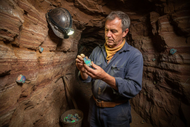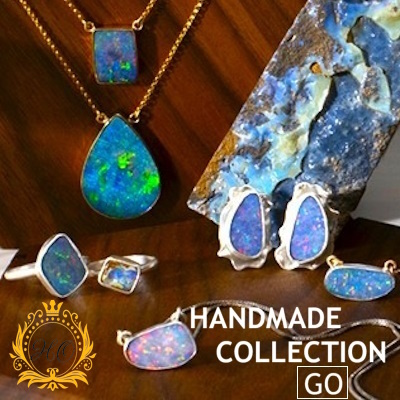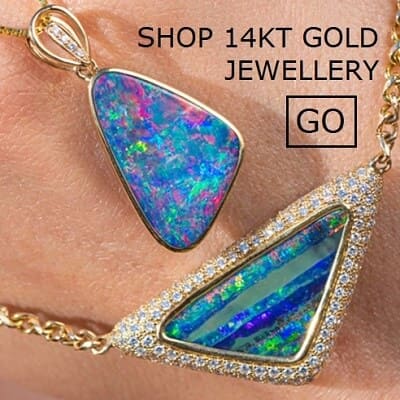What Is Opal Formation? Complete Guide for Collectors
Posted by AOD on 22nd Oct 2025
What Is Opal Formation? Complete Guide for Collectors
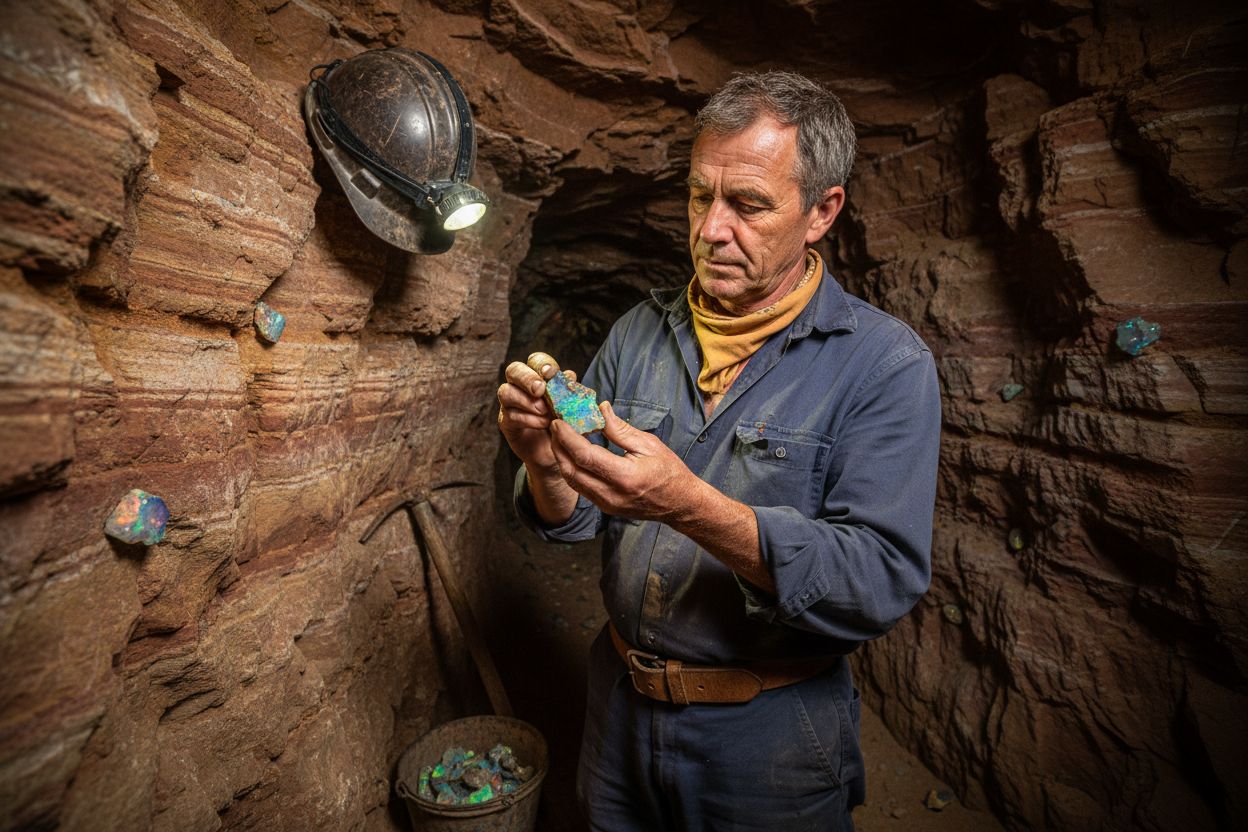
Did you know that nearly 95 percent of the world’s opal supply comes from Australia? This vibrant gemstone has sparked countless myths and confusion about how it forms and what sets rare, precious opals apart from their common counterparts. With a dazzling mix of science and beauty, opals reveal unique clues about Earth’s underground processes. Accurate knowledge helps separate fact from fiction and makes it easier to spot the qualities that truly define these natural wonders.
Table of Contents
- Defining Opal Formation And Common Misconceptions
- Geological Processes Behind Opal Creation
- Major Types Of Natural Opal Formations
- Key Opal-Bearing Regions And Their Uniqueness
- Factors Influencing Opal Quality And Rarity
- Comparing Natural Versus Synthetic Opals
Key Takeaways
| Point | Details |
|---|---|
| Opal Composition | Opal is a hydrated amorphous silica formed through complex geological processes under low-temperature conditions. |
| Types of Opals | There are two main types of opals: precious opals, which display play-of-colour, and common opals, which do not. |
| Formation Processes | Opals form either through sedimentary processes or volcanic activity, each leading to unique characteristics. |
| Quality Factors | Key factors for opal value include body tone, transparency, and play-of-colour, all influencing a stone’s desirability and market value. |
Defining Opal Formation and Common Misconceptions
Understanding opal formation requires exploring its unique mineralogical characteristics. According to research from Wikipedia, opal is a hydrated amorphous form of silica (SiO₂·nH₂O) that forms through complex precipitation processes in diverse geological environments. Unlike crystalline gemstones, opals develop in low-temperature conditions and can emerge within sedimentary, volcanic, or organic host materials.
Contrary to popular belief, not all opals exhibit the mesmerizing play-of-colour phenomenon. Gemstone enthusiasts often distinguish between two primary categories: precious opal, which displays spectacular color shifts, and common opal, which lacks this distinctive optical feature. This nuanced understanding challenges simplistic perceptions about opal’s formation and visual properties.
The formation process involves intricate silica precipitation, where microscopic silica spheres arrange themselves in precise, orderly structures. These spheres determine the opal’s potential to reflect light and create its signature iridescent effect. Factors like sphere size, arrangement, and environmental conditions dramatically influence the gemstone’s ultimate appearance and value.
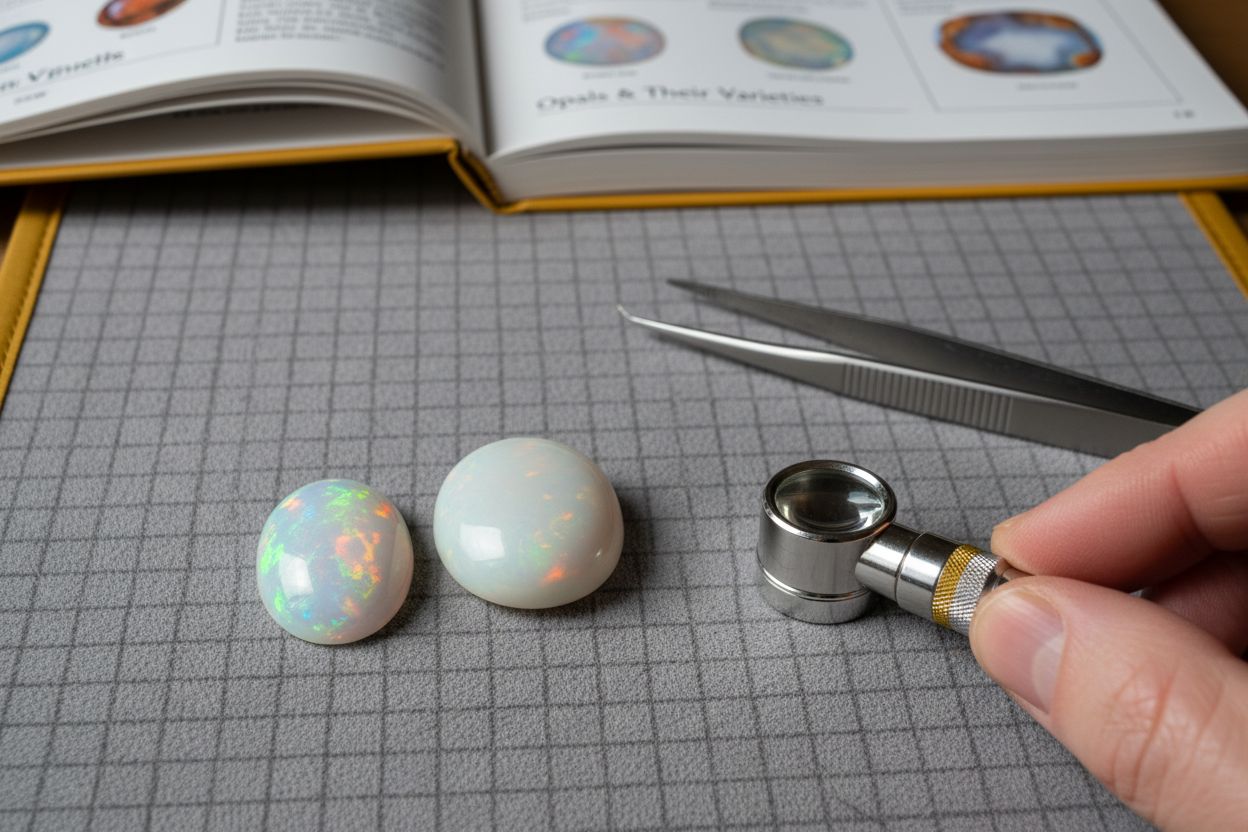
To explore more about the fascinating world of opals, check out our guide on different types of opal, which provides deeper insights into these remarkable geological treasures.
Geological Processes Behind Opal Creation
Opal formation represents a fascinating geological phenomenon with two primary pathways: sedimentary and volcanic. According to research from Wikipedia, these processes reveal the complex mechanisms behind opal creation, highlighting the gem’s remarkable geological diversity.
In sedimentary environments, opal forms through a meticulous process of slow silica-rich gel dehydration. This occurs during fluctuating wet-dry climatic cycles, where microscopic silica particles gradually fill pores, faults, and cavities within rock formations. The result is a delicate network of silica spheres that can create stunning optical effects depending on their arrangement and size.
Volcanic opals emerge through a distinctly different mechanism—hydrothermal processes within volcanic rock systems. Here, chaotically arranged nanospheres create a unique spectral shimmer, demonstrating how unpredictable geological conditions can produce extraordinary gemstone characteristics. These nanoscale interactions determine the opal’s potential for creating mesmerizing light-reflecting properties.
To dive deeper into the world of these geological treasures, explore our guide on what is opal and how it is formed, which offers comprehensive insights into the intricate journey of opal creation.
Major Types of Natural Opal Formations
According to research from the Opal Association, natural opals are categorized into three primary industrial classifications based on their formation and structural characteristics. These types provide collectors and enthusiasts with a comprehensive understanding of how these remarkable gemstones develop in different geological environments.
Here’s a summary of the major natural opal formation types:
| Type | Structural Features | Host Rock Relationship | Typical Appearance |
|---|---|---|---|
| Type 1 (Solid) | Uniform composition | Not attached | Consistent structure |
| Type 2 (Boulder) | Layered with host rock | Attached to host | Unique patterns |
| Type 3 (Matrix) | Fills porous spaces | Integrated in matrix | Intricate designs |
Type 1 opals represent solid homogenous formations, characterized by their uniform composition and consistent internal structure. Type 2 opals, known as boulder opals, remain uniquely attached to their original host rock, creating distinctive patterns and textures that make each specimen truly one-of-a-kind. Type 3 opals fill porous spaces within host rock matrices, presenting a complex and intricate geological narrative.
Beyond these structural classifications, opals are further distinguished by additional characteristics such as body tone (black, dark, or light), transparency (ranging from crystal-clear to water-like), and their play-of-colour properties. The Gems Society highlights that opals can be categorized as precious or common, with precious opals displaying remarkable colour variations that create their signature iridescent shimmer.
For gem enthusiasts eager to explore the nuanced world of these fascinating stones, our guide on opal types offers an in-depth exploration of these mesmerizing natural formations.
Key Opal-Bearing Regions and Their Uniqueness
According to Wikipedia, Australian opal regions represent a geological treasure trove with distinct characteristics that make each location unique. The primary opal-producing areas include Coober Pedy, Mintabie, Andamooka in South Australia, and the legendary Lightning Ridge in New South Wales, each contributing its own signature to the world of opal production.
Coober Pedy, often referred to as the opal capital of the world, is renowned for producing an extraordinary range of white and crystal opals. In contrast, Lightning Ridge stands out for its exceptional black opals, sourced from the mid-Cretaceous Griman Creek Formation. This geological formation is not just a gemstone haven but also a paleontological wonder, with opalised fossils adding to its scientific significance.
Each region’s unique geological conditions create distinct opal characteristics. Andamooka produces matrix opals with intricate patterns embedded in their host rock, while Mintabie offers opals with remarkable clarity and color variations. The diversity of these regions demonstrates how local geological processes dramatically influence the formation, color, and quality of opals.
To explore the fascinating world of these unique gemstone origins, check out our guide on black opals, which delves deeper into the remarkable characteristics of these geological treasures.
Factors Influencing Opal Quality and Rarity
According to the Gems Society, opal quality is a complex interplay of multiple intricate factors that determine a stone’s value and desirability. The primary dimensions of quality include body tone, transparency, and the mesmerizing phenomenon known as play-of-colour—each contributing uniquely to the gem’s overall assessment.
Body tone represents a critical quality indicator, ranging from black to white. The darkest body tones are typically most prized, with black opals commanding the highest market values. Transparency further refines this assessment, with crystal-clear opals that reveal vivid play-of-colour being exceptionally rare and valuable. The intensity and distribution of color-shifting properties can dramatically elevate an opal’s worth.
Structural classification adds another layer of complexity to opal valuation. The Opal Association highlights that an opal’s authenticity—whether it’s a natural solid stone or a composite creation—significantly impacts its rarity and market value. Factors like host rock attachment, treatment history, and origin all contribute to a nuanced understanding of an opal’s true worth, making each stone a unique geological storyteller.
To dive deeper into the fascinating world of these remarkable gemstones, explore our guide on how rare opals are, which provides comprehensive insights into the intricate factors that make each opal a precious treasure.
Comparing Natural Versus Synthetic Opals
According to the Opal Academy, synthetic opals represent a fascinating technological counterpart to their natural counterparts, with distinct structural and chemical differences that set them apart. While visually similar, these laboratory-created stones fundamentally diverge from earth-mined opals in composition and intrinsic characteristics.
Natural opals emerge through complex geological processes, containing water and forming within rock formations over millions of years. In contrast, synthetic opals are created in controlled laboratory environments, often incorporating stabilizing chemicals and polymers that fundamentally alter their molecular structure. These lab-grown stones may mimic the visual appearance of natural opals but lack the unique geological narrative embedded in earth-mined specimens.
The key distinctions extend beyond mere composition. Natural opals maintain intricate internal structures reflecting their geological origin, with variations in water content, mineral inclusions, and precise silica sphere arrangements that make each stone unique. Synthetic opals, while scientifically impressive, cannot replicate the subtle nuances and individual character that make natural opals truly extraordinary. Their predictable, uniform creation process means they inherently lack the unpredictability and geological storytelling of naturally formed gemstones.
![]()
For collectors and enthusiasts seeking to distinguish between these remarkable stones, our guide on identifying authentic opals offers comprehensive insights into recognizing the subtle yet significant differences between natural and synthetic opals.
Discover Authentic Australian Opals That Tell a Story
Understanding the intricate process behind opal formation reveals just how rare and remarkable these gemstones truly are. If you are captivated by the unique geological journey from silica spheres to dazzling play-of-colour, you deserve an opal that reflects this natural wonder. Many collectors struggle to find genuine stones that showcase these precious qualities — body tone, transparency, and natural structure — while avoiding synthetic imitations.
At Australian Opal Direct, we specialize in ethically sourced, earth-mined Australian opals from iconic regions like Lightning Ridge and Coober Pedy. Our curated collection, including custom-designed jewelry, offers stunning pieces that embody the natural beauty and rarity you read about in the guide on what is opal and how it is formed. Every opal carries a geological story waiting to become part of yours.
Explore handcrafted rings, pendants, and sets that reveal the captivating mysteries of natural opal formation.

Uncover the authentic beauty and quality that only genuine Australian opals provide. Begin your collection with confidence by visiting Australian Opal Direct now and experience firsthand the elegance and rarity of true opal artistry.
Frequently Asked Questions
What are the main processes behind opal formation?
Opal formation primarily occurs through two geological processes: sedimentary and volcanic. In sedimentary environments, opals form by the slow dehydration of silica-rich gel filling rock cavities, while volcanic opals emerge through hydrothermal processes in volcanic rock formations.
What are the different types of opals according to their formation?
Natural opals are categorized into three main types: Type 1 (Solid), Type 2 (Boulder), and Type 3 (Matrix). Each type has unique structural features and relationships with the host rock, influencing their appearance and value.
How does play-of-colour affect the value of an opal?
Play-of-colour is a critical factor in determining opal value. Precious opals display vibrant color shifts and iridescence, while common opals lack this feature. Generally, opals with more intense play-of-colour command higher prices in the market.
What distinguishes natural opals from synthetic opals?
Natural opals form through complex geological processes over millions of years, while synthetic opals are created in labs. Natural opals possess unique internal structures and characteristics tied to their geological origin, unlike synthetic opals, which may appear similar but lack these individual geological narratives.
